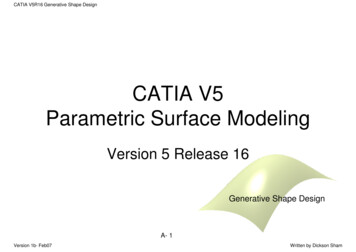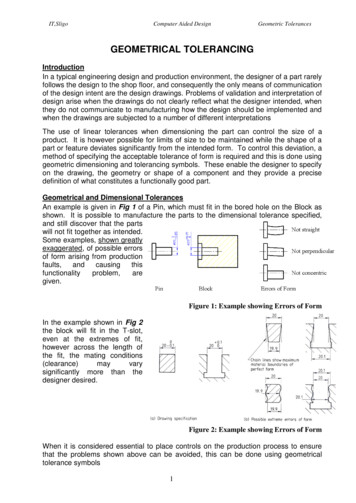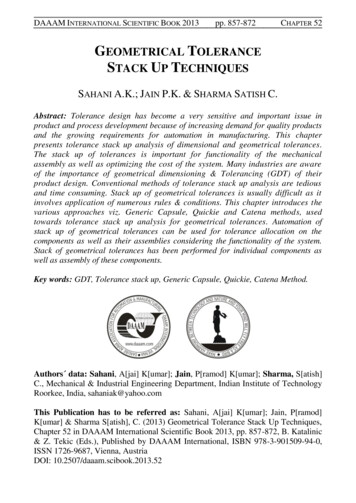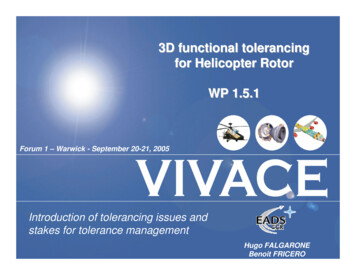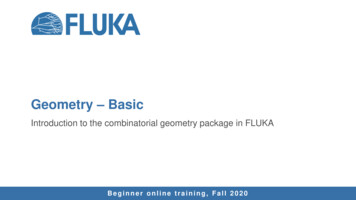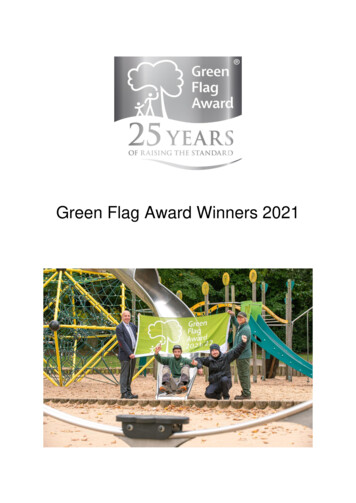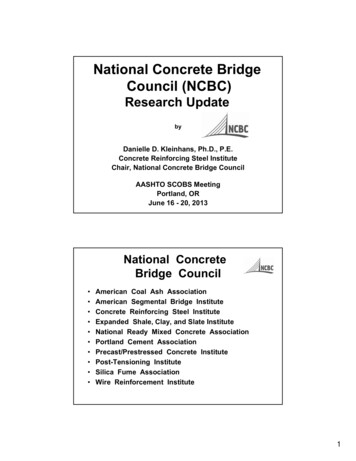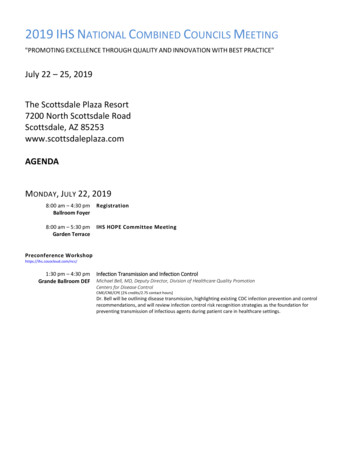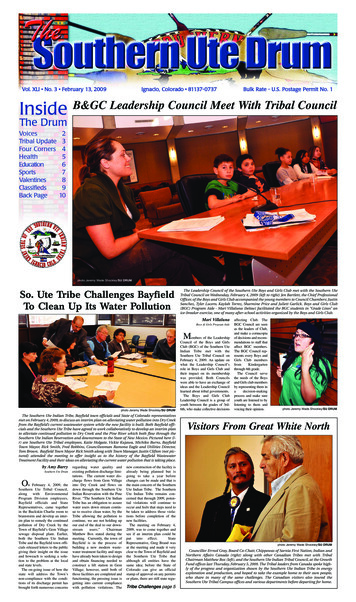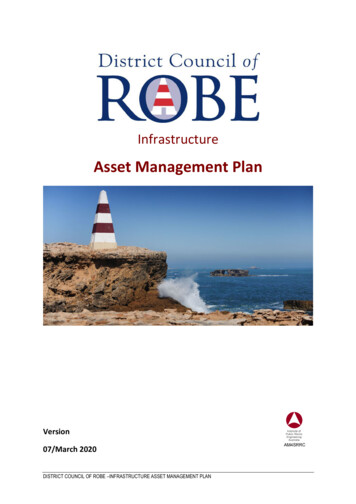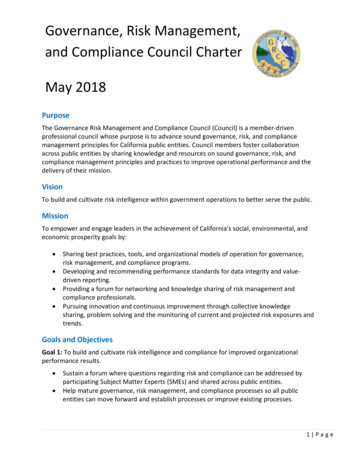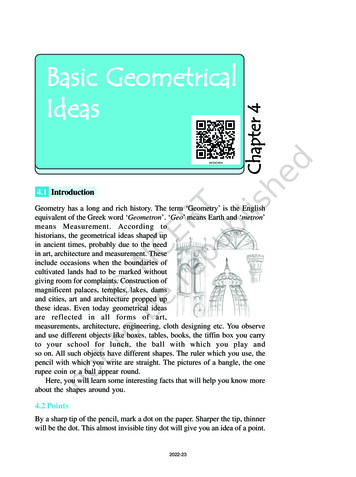
Transcription
Chapter 4Basic GeometricalIdeas4.1 IntroductionGeometry has a long and rich history. The term ‘Geometry’ is the Englishequivalent of the Greek word ‘Geometron’. ‘Geo’ means Earth and ‘metron’means Measurement. According tohistorians, the geometrical ideas shaped upin ancient times, probably due to the needin art, architecture and measurement. Theseinclude occasions when the boundaries ofcultivated lands had to be marked withoutgiving room for complaints. Construction ofmagnificent palaces, temples, lakes, damsand cities, art and architecture propped upthese ideas. Even today geometrical ideasare reflected in all forms of art,measurements, architecture, engineering, cloth designing etc. You observeand use different objects like boxes, tables, books, the tiffin box you carryto your school for lunch, the ball with which you play andso on. All such objects have different shapes. The ruler which you use, thepencil with which you write are straight. The pictures of a bangle, the onerupee coin or a ball appear round.Here, you will learn some interesting facts that will help you know moreabout the shapes around you.4.2 PointsBy a sharp tip of the pencil, mark a dot on the paper. Sharper the tip, thinnerwill be the dot. This almost invisible tiny dot will give you an idea of a point.2022-23
MATHEMATICSA point determinesa location.These are somemodels for a point :If you mark threepoints on a paper, youwould be required toThe tip of adistinguish them. Forcompassthis they are denotedby a single capital letter like A,B,C.lBThe sharpenedend of a pencilThe pointed end ofa needleThese points will be read as point A, point B and point C.AllCOf course, the dots have to be invisibly thin.1. With a sharp tip of the pencil, mark four points on a paper and name themby the letters A,C,P,H. Try to name these points in different ways. One suchway could be this2. A star in the sky also gives us an idea of a point. Identify at least five suchsituations in your daily life.4.3 A Line SegmentFold a piece of paper and unfold it. Do you seea fold? This gives the idea of a line segment. Ithas two end points A and B.Take a thin thread. Hold its two ends andstretch it without a slack. It represents a linesegment. The ends held by hands are the endpoints of the line segment.702022-23
B ASIC G EOMETRICAL I DEASThe following are some models for a line segment :An edge ofa boxThe edge of a post cardA tube lightTry to find more examples for line segmentsfrom your surroundings.BMark any two points A and B on a sheetof paper. Try to connect A to B by all possibleroutes. (Fig 4.1)What is the shortest route from A to B?AThis shortest join of point A to BFig 4.1(including A and B) shown here is a linesegment. It is denoted byor. The points A and B are called the endpoints of the segment.1. Name the line segments in the figure 4.2.Is A, the end point of each line segment?Fig 4.24.4 A LineImagine that the line segment from A to B (i.e. AB ) is extended beyond A inone direction and beyond B in the other directionwithout any end (see figure). You now get a modelfor a line.Do you think you can draw a complete picture of a line? No. (Why?)suurA line through two points A and B is written as AB . It extendsindefinitely in both directions. So it contains a countlessnumber of points. (Think about this).Two points are enough to fix a line. We say ‘two pointsdetermine a line’.The adjacent diagram (Fig 4.3) is that of a line PQ writtensuuras PQ . Sometimes a line is denoted by a letter like l, m.2022-23Fig 4.371
MATHEMATICS4.5 Intersecting LinesLook at the diagram (Fig 4.4). Two lines l1 and l2are shown. Both the lines pass through point P.We say l1 and l2 intersect at P. If two lines haveone common point, they are called intersectinglines.Fig 4.4The following are some models of a pair ofintersecting lines (Fig 4.5) :Try to find out some more models for a pair of intersecting lines.Two adjacement edgesof your notebookThe letter X of theEnglish alphabetCrossing-roadsFig 4.5Take a sheet of paper. Make two folds (and crease them) to represent a pair ofintersecting lines and discuss :(a) Can two lines intersect in more than one point?(b) Can more than two lines intersect in one point?4.6 Parallel LinesLet us look at this table (Fig 4.6). The top ABCD is flat. Are you able to seesome points and line segments?Are there intersecting line segments?Yes, AB and BC intersect at thepoint B.Which line segments intersect at A?at C? at D?Do the lines AD and CD intersect?Fig 4.6722022-23
B ASIC G EOMETRICAL I DEASsuursuurDo the lines AD and BC intersect?You find that on the table’s surface there are line segment which will notsuursuurmeet, however far they are extended. AD and BC form one such pair. Canyou identify one more such pair of lines (which do not meet) on the top ofthe table?Lines like these which do not meet are said to be parallel; and are calledparallel lines.Think, discuss and writeWhere else do you see parallel lines? Try to find ten examples.suursuursuursuurIf two lines AB and CD are parallel, we write AB CD .If two lines l1 and l2 are parallel, we write l1 l2 .Can you identify parrallel lines in the following figures?The opposite edges of ruler (scale)The cross-bars of this windowRail lines4.7 RayBeam of light froma light houseRay of lightfrom a torch73Sun rays2022-23
MATHEMATICSThe following are some models for a ray :A ray is a portion of a line. It starts at one point (called starting point orinitial point) and goes endlessly in a direction.Look at the diagram (Fig 4.7) of ray shown here. Twopoints are shown on the ray. They are (a) A, the startingpoint (b) P, a point on the path of the ray.uuurWe denote it by AP .Fig 4.7Think, discuss and writeuuurIf PQ is a ray,(a) What is its startingpoint?(b) Where does the pointQ lie on the ray?(c) Can we say that Q isthe starting point of thisray?1. Name the rays given in thispicture (Fig 4.8).2. Is T a starting point of eachof these rays?Fig 4.8uuurHere is a ray OA (Fig 4.9). It starts at O and passesthrough the point A. It also passes through the point B.uuurCan you also name it as OB ? Why?uuuruuurOA and OB are same here.uuur uuurCan we write OA as AO ? Why or why not?Fig 4.9Draw five rays and write appropriate names for them.What do the arrows on each of these rays show?EXERCISE 4.11. Use the figure to name :(a) Five points(b) A line(c) Four rays(d) Five line segments2. Name the line given in all possible (twelve) ways, choosing only two letters at atime from the four given.742022-23
B ASIC G EOMETRICAL I DEAS3. Use the figure to name :(a) Line containing point E.(b) Line passing through A.(c) Line on which O lies(d) Two pairs of intersecting lines.4. How many lines can pass through (a) one given point? (b) two given points?5. Draw a rough figure and label suitably in each of the following cases:(a) Point P lies on AB .suursuur(b) XY and PQ intersect at M.(c) Line l contains E and F but not D.suursuur(d) OP and OQ meet at O.suuur6. Consider the following figure of line MN . Say whether following statements are trueor false in context of the given figure.suuur(a) Q, M, O, N, P are points on the line MN .(b) M, O, N are points on a line segment MN .(c) M and N are end points of line segment MN .(d) O and N are end points of line segment OP .(e) M is one of the end points of line segment QO .uur(f) M is point on ray OP .uuruur(g) Ray OP is different from ray QP .uuuuruur(h) Ray OP is same as ray OM . uuruuuur(i) Ray OM is not opposite touurayr OP .(j) O is not an initial point uofuurOP . uuuur(k) N is the initial point of NP and NM .4.8 CurvesHave you ever taken a piece of paper and just doodled? The pictures thatare results of your doodling are called curves.(v)(vi)Fig 4.102022-23(vii)75
MATHEMATICSYou can draw some of these drawings without lifting the pencil from the paperand without the use of a ruler. These are all curves (Fig 4.10).‘Curve’ in everyday usage means “not straight”. In Mathematics, a curvecan be straight like the one shown in fig 4.10 (iv).Observe that the curves (iii) and (vii) in Fig 4.10 cross themselves,whereas the curves (i), (ii), (v) and (vi) in Fig 4.10 do not. If a curve doesnot cross itself, then it is called a simple curve.Draw five more simple curves and five curves that are not simple.Consider these now (Fig 4.11).What is the difference between thesetwo? The first i.e. Fig 4.11 (i) is anopen curve and the second i.e. Fig 4.11(ii)is a closed curve. Can you identify someclosed and open curves from the figuresFig 4.10 (i), (ii), (v), (vi)? Draw five curveseach that are open and closed.Fig 4.11Position in a figureA court line in a tennis court divides it into three parts : inside the line, on theline and outside the line. You cannot enter inside without crossing the line.A compound wall separates your housefrom the road. You talk about ‘inside’ thecompound, ‘on’ the boundary of thecompound and ‘outside’ the compound.In a closed curve, thus, there are three parts.(i) interior (‘inside’) of the curve(ii) boundary (‘on’) of the curve andFig 4.12(iii) exterior (‘outside’) of the curve.In the figure 4.12, A is in the interior, C is in the exterior and B is onthe curve.The interior of a curve together with its boundary is called its “region”.4.9 PolygonsLook at these figures 4.13 (i), (ii), (iii), (iv), (v) and (vi).76(i)(ii)(iv)(iii)Fig 4.132022-23(v)(vi)
B ASIC G EOMETRICAL I DEASWhat can you say? Are they closed? How does each one of them differfrom the other? (i), (ii), (iii), (iv) and (vi) are special because they are madeup entirely of line segments. Out of these (i), (ii), (iii) and (iv) are also simpleclosed curves. They are called polygons.So, a figure is a polygon if it is a simple closed figure made up entirely ofline segments. Draw ten differently shaped polygons.Do ThisTry to form a polygon with1. Five matchsticks.2. Four matchsticks.3. Three matchsticks.4. Two matchsticks.In which case was it not possible? Why?Fig 4.14Sides, vertices and diagonalsExamine the figure given here (Fig 4.14).Give justification to call it a polygon.The line segments forming a polygon are called its sides.What are the sides of polygon ABCDE? (Note how the corners are namedin order.)Sides are AB, BC, CD, DE and EA .The meeting point of a pair of sides is called its vertex.Sides AE and ED meet at E, so E is a vertex of the polygon ABCDE. PointsB and C are its other vertices. Can you name the sides that meet at these points?Can you name the other vertices of the above polygon ABCDE?Any two sides with a common end point are called the adjacent sides ofthe polygon.Are the sides AB and BC adjacent? How about AE and DC ?The end points of the same side of a polygon are called theadjacent vertices. Vertices E and D are adjacent, whereasvertices A and D are not adjacent vertices. Do you see why?Consider the pairs of vertices which are not adjacent. Thejoins of these vertices are called the diagonals of the polygon.In the figure 4.15, AC, AD, BD , BE and CE are diagonals.Is BC a diagonal, Why or why not?Fig 4.15772022-23
MATHEMATICSIf you try to join adjacent vertices, will the result be a diagonal?Name all the sides, adjacent sides, adjacent vertices of the figure ABCDE(Fig 4.15).Draw a polygon ABCDEFGH and name all the sides, adjacent sides andvertices as well as the diagonals of the polygon.EXERCISE 4.21. Classify the following curves as (i) Open or (ii) Closed.(a)(a)(a) (a)(b)(c)(b) (b)(b)(c) (c)(d)(c)(e)2. Draw rough diagrams to illustrate the following :(a) Open curve (b) Closed curve.3. Draw any polygon and shade its interior.(d) the(e) answer(d)given(e) (e)the questions :(d) figure and4. Consider(a) Is it a curve? (b) Is it closed?5. Illustrate, if possible, each one of the following with a rough diagram:(a) A closed curve that is not a polygon.(b) An open curve made up entirely of line segments.(c) A polygon with two sides.4.10 AnglesAngles are made when cornersare formed.Here is a picture (Fig 4.16)where the top of a box is like ahinged lid. The edges AD of thebox and AP of the door can beuuurFig 4.16imagined as two rays AD anduuurAP . These two rays have acommon initial point A. The two rays here together are said to form an angle.An angle is made up of two rays starting from a common initial point.The two rays forming the angle are called the arms or sides of the angle.The common initial point is the vertex of the angle.782022-23
B ASIC G EOMETRICAL I DEASuuuruuurThis is an angle formed by rays OP and OQ(Fig 4.17). To show this we use a small curve at thevertex. (see Fig 4.17). O is the vertex. What are theuuurFig 4.17uuursides? Are they not OP and OQ ?How can we name this angle? We can simply saythat it is an angle at O. To be more specific weidentify some two points, one on each side and thevertex to name the angle. Angle POQ is thus a betterway of naming the angle. We denote this by POQ .Think, discuss and writeLook at the diagram (Fig 4.18).What is the nameof the angle? Shall we say P ? But then whichone do we mean? By P what do we mean?Is naming an angle by vertex helpful here?Why not?Fig 4.18By P we may mean APB or CPB or even APC ! We need more information.Note that in specifying the angle, the vertex is always written as themiddle letter.Do ThisTake any angle, say ABC .Shade that portion of the paper borderinguuuruuurBA and where BC lies.792022-23
MATHEMATICSNow shade in a different colour the portionuuuruuurof the paper bordering BC and where BA lies.The portion common to both shadings iscalled the interior of ABC (Fig 4.19). (Notethat the interior is not a restricted area; itextends indefinitely since the two sides extendindefinitely).Fig 4.19In this diagram (Fig 4.20), X is in theinterior of the angle, Z is not in the interior butin the exterior of the angle; and S is on the PQR . Thus, the angle also has three partsassociated with it.Fig 4.20EXERCISE 4.3C1. Name the angles in the given figure.DBA2. In the given diagram, name the point(s)(a) In the interior of DOE(b) In the exterior of EOF(c) On EOF803. Draw rough diagrams of two angles such that theyhave(a) One point in common.(b) Two points in common.(c) Three points in common.(d) Four points in common.(e) One ray in common.2022-23
B ASIC G EOMETRICAL I DEAS4.11 TrianglesA triangle is a three-sided polygon.In fact, it is the polygon with the leastnumber of sides.Look at the triangle in the diagram(Fig 4.21). We write ABC instead ofwriting “Triangle ABC”.In ABC, how many sides and howmany angles are there?The three sides of the triangle areFig 4.21AB , BC and CA . The three angles are BAC , BCA and ABC . The pointsA, B and C are called the vertices ofthe triangle.Being a polygon, a triangle has anexterior and an interior. In the figure 4.22,P is in the interior of the triangle, R is inthe exterior and Q on the triangle.Fig 4.22EXERCISE 4.41. Draw a rough sketch of a triangle ABC. Mark a point P in its interior and a point Q inits exterior. Is the point A in its exterior or in its interior?2. (a) Identify three triangles in the figure.A(b) Write the names of seven angles.(c) Write the names of six line segments.(d) Which two triangles have B as common?BDC4.12 QuadrilateralsA four sided polygon is a quadrilateral. It has4 sides and 4 angles. As in the case of atriangle, you can visualise its interior too.Note the cyclic manner in which thevertices are named.This quadrilateral ABCD (Fig 4.23) hasfour sides AB , BC , CD and DA . It has fourangles A , B , C and D .Fig 4.232022-2381
MATHEMATICSThis is quadrilateral PQRS.Is this quadrilateral PQRS?In any quadrilateral ABCD, AB and BCare adjacent sides. Can you write other pairsof adjacent sides?CAB and DC are opposite sides; Name theother pair of opposite sides.D A and C are said to be opposite angles;similarly, D and B are opposite angles.Naturally A and B are adjacent angles.You can now list other pairs of adjacent angles.BAEXERCISE 4.51. Draw a rough sketch of aquadrilateral PQRS. Draw its diagonals. Name them.Is the meeting point of the diagonals in the interior orexterior of the quadrilateral?2. Draw a rough sketch of a quadrilateral KLMN. State,(a) two pairs of opposite sides,(b) two pairs of opposite angles,(c) two pairs of adjacent sides,(d) two pairs of adjacent angles.3. Investigate :Use strips and fasteners to make a triangle and a quadrilateral.Try to push inward at any one vertex of the triangle. Do the same to the quadrilateral.Is the triangle distorted? Is the quadrilateral distorted? Is the triangle rigid?Why is it that structures like electric towers make use of triangular shapes and notquadrilaterals?822022-23
B ASIC G EOMETRICAL I DEAS4.13 CirclesIn our environment, you find many things that are round, a wheel, a bangle, acoin etc. We use the round shape in many ways. It is easier to roll a heavysteel tube than to drag it.A circle is a simple closed curve which is not a polygon. It has some veryspecial properties.Do This Place a bangle or any round shape; trace around to get a circular shape. If you want to make a circular garden, how will you proceed?Take two sticks and a piece ofrope. Drive one stick into the ground.This is the centre of the proposedcircle. Form two loops, one at eachend of the rope. Place one looparound the stick at the centre. Put theother around the other stick. Keep the sticks vertical to the ground. Keep therope taut all the time and trace the path. You get a circle.Naturally every point on the circle is at equal distance from the centre.Parts of a circleHere is a circle with centre C (Fig 4.24)A, P, B, M are points on the circle. You will see thatCA CP CB CM.Each of the segments CA , CP , CB , CM is radius of thecircle. The radius is a line segment that connects the centre to apoint on the circle. CP and CM are radii (plural of ‘radius’) suchthat C, P, M are in a line. PM is known as diameter of the circle.Is a diameter double the size of a radius? Yes.Fig 4.24PB is a chord connecting two points on a circle. Is PM alsoa chord?An arc is a portion of circle.»If P and Q are two points you get the arc PQ. We write it as PQ(Fig 4.25).As in the case of any simple closed curve you can think of theinterior and exterior of a circle. A region in the interior of a circleenclosed by an arc on one side and a pair of radii on the othertwo sides is called a sector (Fig 4.26).2022-23Fig 4.2583
MATHEMATICSA region in the interior of a circle enclosed bya chord and an arc is called a segment of the circle.Take any circular object. Use a thread and wrapit around the object once. The length of the threadis the distance covered to travel around the objectonce. What does this length denote?The distance around a circle is its circumference.Do ThisFig 4.26Take a circular sheet. Fold it into two halves.Crease the fold and open up. Do you find that thecircular region is halved by the diameter?A diameter of a circle divides it into two equal parts; eachpart is a semi-circle. A semi-circle is half of a circle, withthe end points of diameter as part of the boundary.lEXERCISE 4.61. From the figure, identify :(a) the centre of circle(b) three radii(c) a diameter(d) a chord(e) two points in the interior (f) a point in the exterior(g) a sector(h) a segment2. (a) Is every diameter of a circle also a chord?(b) Is every chord of a circle also a diameter?3. Draw any circle and mark(a) its centre(b) a radius(c) a diameter(d) a sector(e) a segment(f) a point in its interior(g) a point in its exterior(h) an arc4. Say true or false :(a) Two diameters of a circle will necessarily intersect.(b) The centre of a circle is always in its interior.What have we discussed?841. A point determines a location. It is usually denoted by a capital letter.2. A line segment corresponds to the shortest distance between two points. The linesegment joining points A and B is denoted by AB .2022-23
B ASIC G EOMETRICAL I DEAS3. A line is obtained when a line segment like AB is extended on both sides indefinitely;suurit is denoted by AB or sometimes by a single small letter like l.4. Two distinct lines meeting at a point are called intersecting lines.5. Two lines in a plane are said to be parallel if they do not meet.6. A ray is a portion of line starting at a point and going in one direction endlessly.7. Any drawing (straight or non-straight) done without lifting the pencil may becalled a curve. In this sense, a line is also a curve.8. A simple curve is one that does not cross itself.9. A curve is said to be closed if its ends are joined; otherwise it is said to be open.10. A polygon is a simple closed curve made up of line segments. Here,(i) The line segments are the sides of the polygon.(ii) Any two sides with a common end point are adjacent sides.(iii) The meeting point of a pair of sides is called a vertex.(iv) The end points of the same side are adjacent vertices.(v) The join of any two non-adjacent vertices is a diagonal.11. An angle is made up of two rays starting from a common starting / initial point.uuuruuurTwo rays OA and OB make AOB (or also called BOA ).An angle leads to three divisions of a region:On the angle, the interior of the angle and the exterior of the angle.12. A triangle is a three-sided polygon.13. A quadrilateral is a four-sided polygon. (It should be named cyclically).In any quadrilateral ABCD, AB & DC and AD & BC are pairs of oppositesides. A & C and B & D are pairs of opposite angles. A is adjacentto B & D ; similar relations exist for other three angles.14. A circle is the path of a point moving at the same distance from a fixed point.The fixed point is the centre, the fixed distance is the radius and the distancearound the circle is the circumference.A chord of a circle is a line segment joining any two points on the circle.A diameter is a chord passing through the centre of the circle.A sector is the region in the interior of a circle enclosed by an arc on one sideand a pair of radii on the other two sides.A segment of a circle is a region in the interior of the circle enclosed by an arcand a chord.The diameter of a circle divides it into two semi-circles.852022-23
intersect at P. If two lines have one common point, they are called intersecting lines. The following are some models of a pair of intersecting lines (Fig 4.5) : Try to find out some more models for a pair of intersecting lines. Take a sheet of paper. Make two folds (and crease them) to represent a pair of intersecting lines and discuss :
